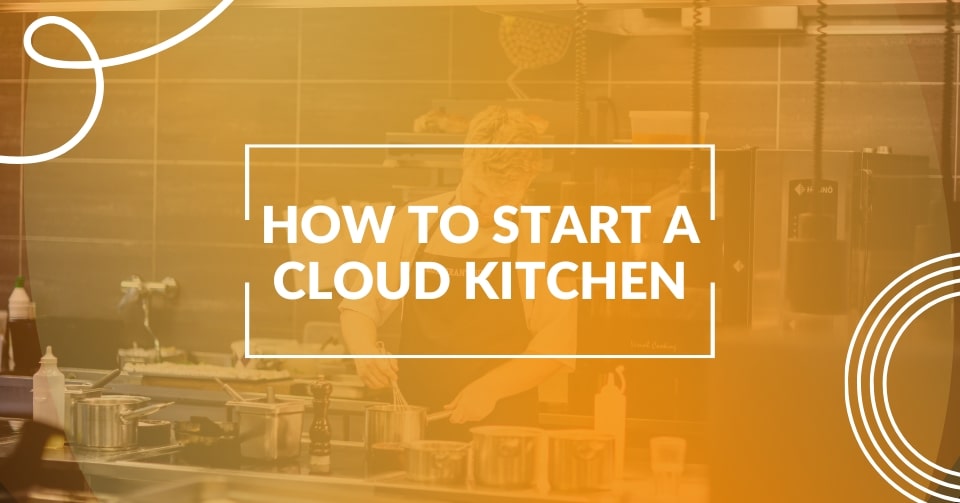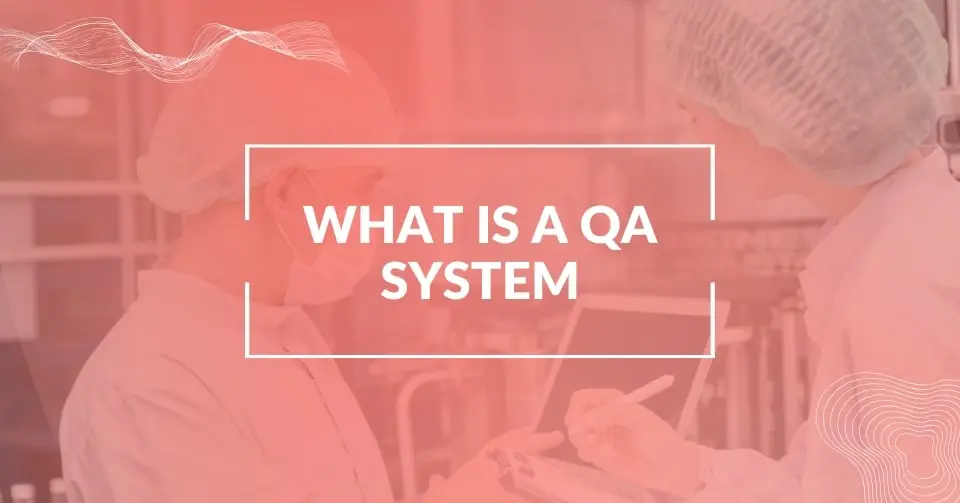The food industry is going through a major shift, with cloud kitchens, often called ghost or dark kitchens, taking center stage as a groundbreaking innovation.
These delivery-only spots are changing the game for food businesses, providing a cost-effective and scalable solution that meets the rising demand for online food delivery.
The global cloud kitchen market size was valued at USD 73.18 billion in 2024 and is projected to grow at a CAGR of 11.9% from 2025 to 2030
This detailed guide will take you through the key steps to successfully launch a cloud kitchen, highlighting the crucial aspects of food safety and operational efficiency.
What Is a Cloud Kitchen or “Ghost Kitchen”?
The cloud kitchen is a model that delivers food directly to your door from their facility, solving time restraints of booking tables prior and then going for the specific time frame.
Cloud kitchens help businesses save costs on dining areas and big spaces for serving a crowd. That time and cost help the business owners create delicious dishes and deliver them quickly.
This helps businesses in cities with high rents and for people who are always on the lookout for fast and yummy food.
Step-by-Step Guide on Starting a Cloud Kitchen
1. Conduct Market Research and Identify Your Skill-Set
Always start with what people in our nearest area and town want, who your competitors are, and where the demands have not been made.
Look for a niche or a type of cuisine that not only matches your skills but also fits what the market is looking for.
2. Develop a Sturdy Business Plan
You need a strong business plan to create a successful business. Starting by outlining the objectives, identifying the target market, and setting a detailed menu.
You should not forget the marketing plan and strategic pricing.
The layout is essential, including financial projections, startup costs, operating expenses, and revenue overviews. A roadmap to a well-organized business plan is important in attracting funding.
3. Choose an Optimal Location
Select the location according to accessibility and affordability. High-demand delivery zones can enhance efficiency, as cloud kitchens don’t require a prime location for working.
In major US cities, the rental costs are 20 to 30% lower than traditional restaurant locations.
4. Set Up Kitchen Infrastructure
While setting up, you must invest in essential kitchen equipment, including cooking appliances, refrigeration units, and packaging stations. A typical kitchen may cost more compared to a cloud kitchen.
Keep in mind food safety standards that promote efficiency in workflow and maintain hygiene.
5. Obtain Necessary Licenses and Permits
Compliance with food safety regulations is critical. Depending on your annual turnover, you’ll need to acquire the appropriate FSSAI license:
- Business License
- Food Service License
- Health Department Permit
- Fire Department Permit
- Employee Identification Number (EIN)
- Building Health Permit
- Certificate of Occupancy
- Waste Disposal License
- Alcohol Beverage License (If Applicable)
- Food Handler’s Permit
- Zoning Permit
- Sales Tax Permit
- Food Facility Permit
6. Design a Delivery-Friendly Menu
Create a menu that maintains quality during transit. Focus on dishes that are easy to prepare, package, and deliver. Items like burgers and sandwiches are popular due to their simplicity and delivery suitability.
7. Implement a Technology-Driven Ordering System
By now, you should be ready to integrate or register with the major food delivery platforms like Grubhub, Instacart, Gopuff, DoorDash, and Seamless.
Developing a user-friendly website or app to accept direct orders can also help build brand loyalty and reduce commission.
8. Prioritize Food Safety and Quality Control
Maintaining high food safety and quality control is very important. Implement standardized operating procedures (SOPs) for handling, storing, and preparing food.
Regularity in staffing training and audits prevents foodborne illness and maintains compliance.
Leveraging FoodReady for Enhanced Food Safety Management
FoodReady is software designed to organize food safety and quality assurance processes. Key features include:
- Digital HACCP Plans: Create and manage Hazard Analysis and Critical Control Points (HACCP) plans to identify and control potential food safety hazards.
- Automated Monitoring: To monitor guidelines like temperature and humidity in real time, it’s necessary to utilize loT devices.
- Audit Management: Documenting and scheduling internal audits to maintain concurrence with regulatory standards.
- Training Modules: Use the training material available in the online library to train staff on best practices in food safety and hygiene.
Integrating FoodReady into your operations can enhance transparency, reduce risks, and build consumer trust.
Launching a Cloud Kitchen? We’ll Help You Start Right
From licensing to food safety to delivery readiness, our tools and consultants help you set up your cloud kitchen the smart way.
Success Story in the Cloud Kitchen Space
Kitopi, a Dubai-based cloud kitchen startup, made an important decision in 2021. While their B2B model, powering restaurant delivery through centralized kitchens, was thriving, increasing consolidation among food aggregators threatened their control over customer data and margins.
They developed the software to optimize kitchen operations and the supply chain, but CEO Mohamad Ballout questioned whether to expand their B2C presence, license their tech, or double down on operations.
This problematic situation highlighted the challenges of scaling in a fast-growing food tech scenario.
For food businesses navigating similar complexities, FoodReady offers a platform that helps with food safety compliance, automates HACCP plans, and provides ongoing operational insights. This empowers brands to grow confidently while maintaining quality and regulatory standards.
Ready to future-proof your food operations? Let’s explore how FoodReady software can support your growth journey today.
Real-World Examples of Cloud Kitchens Thriving in the U.S.
- Kitchen United
Backed by Google Ventures, Kitchen United provides shared kitchen facilities for brands like Chick-fil-A and Portillo’s, helping them expand into new markets quickly.
- DoorDash Kitchens
Launched by DoorDash, this venture offers fully equipped shared kitchen spaces to help restaurants expand into new delivery zones. It enables brands like Chick-fil-A, Nation’s Giant Hamburgers, and more to test new markets with reduced overhead.
- mrbeast burger
It’s a delivery-only restaurant launched in the town of Wilson, North Carolina, also known as the world’s first free restaurant. They use Virtual Dining Concepts Company for their delivery only restaurant operations.
- Grilled Cheese Society
Grilled Cheese Society is a tasty, online-only, chef-curated restaurant created by Nextbite. The restaurant is founded in 2017 with delivery only option.
- The Local Culinary
A Florida-based company has a centralized kitchen that helps more than 50 brands with virtual kitchen setups or shared kitchen setups across major cities.
What Are the Pros and Cons of a Cloud Kitchen?
A cloud kitchen, also known as a ghost or virtual kitchen, operates without a dine-in facility and only on a food delivery basis.
This model has gained popularity due to its cost-efficiency and effectiveness regarding consumer behavior.
Pros:
Cost efficiency is a significant factor here. Not having a physical dining space reduces expenses in rent, front-of-house (FOH) staff, and decor.
It allows businesses to invest more in food quality, packaging, and delivery logistics.
It offers expandability. The business owners can launch multiple brands using the same kitchen space, with various cuisines and the same location.
It helps fast-track the likes and dislikes of consumers with any significant losses.
Another advantage is operational efficiency. Centralized food prep allows for better inventory control, streamlined workflows, and optimized labor.
Integration with delivery platforms provides access to a large customer base without heavy upfront marketing.
Cons:
Loyalty and lack of direct customer interaction. It’s a bit hard to build relationships and get immediate feedback.
The high commission charges impact profit margins on most delivery apps.
Quality control might also be a concern. Food quantity, packaging, and consistency must be tightly managed for customer satisfaction. Poor performance can result in negative reviews and ratings, causing business loss.
Final Thoughts
Starting a cloud kitchen isn’t about following a perfect blueprint. It’s about making smart, grounded decisions that fit your goals.
I know how overwhelming it can feel in the beginning: finding the right location, figuring out licensing, choosing delivery platforms, and staying on top of food safety.
But it becomes much more manageable once you break it down into steps.
The truth is, you don’t need a fancy storefront to build a food business that works. What matters is consistency, quality, and being organized behind the scenes.
That’s where tools like FoodReady can really help. Automating your food safety plans, audits, and operational checklists so you can focus on making great food and reliably delivering it.
Don’t wait for perfect conditions if you’re serious about starting a cloud kitchen. Start with what you have, use the tools available, and take the first step. It’s a real business, and you can make it work.
FAQs
Startup costs can range from $10,000 to $50,000, depending on the location, equipment, kitchen size, and whether you’re building from scratch or renting a shared space.
Depending on local laws, you’ll need food business licenses such as a health permit, business registration, food handler certification, and sometimes zoning approval.
Most cloud kitchens use third-party delivery platforms like Uber Eats, DoorDash, or Grubhub and own websites or apps to receive and manage orders.
One of the advantages of cloud kitchens is the ability to operate multiple virtual restaurant brands from the same kitchen facility.
Use HACCP plans, regular inspections, and digital tools like FoodReady to efficiently manage food safety protocols, staff checklists, and audit readiness.
It can be. Lower overhead costs and flexible scaling make it easier to reach profitability, provided food quality, delivery, and marketing are well managed.
FoodReady helps automate food safety tasks, manage compliance documentation, streamline inspections, and maintain operational consistency so you can stay focused on running your business.







